Directed & Produced by Paul Lovelace & Jessica Wolfson
Released by Kino Lorber
USA. 87 min. Not rated
Radio Unnameable is a fan’s portrait of the counterculture radio personality who helped create free-form radio and turned what was considered a one-way medium into a forerunner of the interactive social media that has now almost passed him by.
Directors Paul Lovelace and Jessica Wolfson beautifully set up the feel and the times that inspired Bob Fass to pioneer late-night FM radio in 1963 on the nonprofit Pacifica Foundation’s WBAI in New York City. Illustrated with strong visuals of the post-midnight audience of taxi drivers, ER nurses, and other night owls, Fass describes how he first proposed his overnight show, which he called “Radio Unnameable.” A parade of musicians, particularly those who started out in the Greenwich Village folk scene, such as Judy Collins, give career-start thanks for appearing on his show. Jerry Jeff Walker notes his first performance of “Mr. Bojangles” in 1966 (a song Fass kept repeating) and Arlo Guthrie his first performance of “Alice’s Restaurant” in 1967. Playing one of Bob Dylan’s first radio interviews showcases Fass’s tapes as an astounding archive, and the many clips from his haphazardly stored collection are key elements of the film, which pleads for their preservation.
Fass not only opened his phone lines for requests, a la the late night radio DJ portrayed in Clint Eastwood’s Play Misty for Me (1971), but in the days before talk and sports radio, he held extended conversations with listeners he called “The Cabal,” some who became regular callers, whatever their rants or conspiracy theories, including a threatened suicide who he kept on the line until help could arrive just in time.
Fass began to use his radio time in an even more unusual way by connecting with the hippie vibe, starting with promoting a gathering he called a “fly in” at Kennedy Airport in 1967, then, in a test expansion into social action, for a neighborhood “sweep in” clean-up during the 1975 garbage strike to the annoyance of the city’s sanitation department. The police department reacted more negatively at a similar gathering he promoted at Grand Central Station that turned into an anti-Vietnam War protest taken over by rowdy anarchists. Fass’s own photographic documentation makes the witness interviews more cinematic.
How he integrated the good times vibes and music of flower children with leftist politics is embodied in his friendship and frequent guest Yippie Abbie Hoffman, whose extensive telephoned reports during his trial for his 1968 Democratic Convention activities were among the precursors of today’s “citizen reporters” as activists and listeners called in from such political events.
The film makes a good effort at trying to untangle the endlessly complex internal politics of WBAI as staff clashed with board and management (who are given fair screen time to explain their positions), including a strike by on-air hosts, the takeover of the broadcast tower in the late 1970s, and efforts to broaden the staff from white males. The strife is so never-ending that Fass can now only continue there as a volunteer.
For all Fass’s influence, the film neglects to credit nonpolitical, mainstream culture forerunners, raconteurs like Jean Shepherd’s long storytelling or William B. Williams’ program on the American Songbook, Make Believe Ballroom. The supporting archival photographs and footage, for all how they capture the times, unfortunately undercut and distract from the film’s very premise of the intimacy of the aural relationship between Fass and his audience that is getting left behind by the many Internet modes.

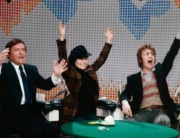
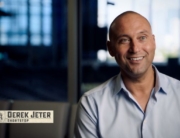
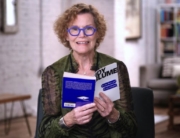
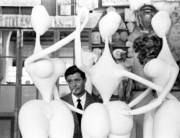
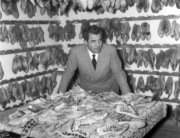
You really need to tune in yourself and then you will know why this film was made. The decades-old archives are the living history of this program (and of a cultural epoch) but they will only become available to us with a wider regular circle of listener/participants, who will then not only come to understand why this man and his special art MUST continue, but why that venue WBAI-FM must survive and undergo the necessary healing and reworking so as to carry essential events like Radio Unnameable far into the future. So if you haven’t as yet, you need to tune in and maybe call up and then you’ll understand….